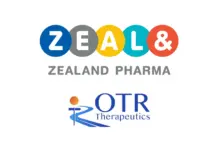University of Miami Miller School of Medicine researchers played a key role in the largest international Alzheimer’s disease genetics collaboration to date, which identified 11 new regions of the genome that contribute to late-onset Alzheimer’s disease, doubling the number of potential genetics-based therapeutic targets to investigate.
Published October 27 in Nature Genetics, the study gives a broader view of the genetic factors contributing to Alzheimer’s and expands the understanding of the disease to new areas, including the immune system, where a genetic overlap with other neurodegenerative diseases, including multiple sclerosis and Parkinson’s disease, was identified.
In 2011, the world’s four largest research consortia on the genetics of Alzheimer’s disease joined efforts to discover and map the genes that contribute to Alzheimer’s, forming the International Genomics of Alzheimer’s Project (IGAP). The team collected genetic information from 25,500 Alzheimer’s disease patients and 49,038 controls from 15 countries to perform this two-stage meta-analysis that resulted in the discovery of 11 new genes in addition to those already known, and the identification of 13 other genes, yet to be validated.
Margaret A. Pericak-Vance, Ph.D., the Dr. John T. Macdonald Foundation Professor of Human Genomics and Director of the John P. Hussman Institute for Human Genomics at the Miller School, and Lindsay A. Farrer, Ph.D., from Boston University, led the analysis teams for the American Alzheimer’s Disease Genetics Consortium, which includes nearly all of the nation’s researchers working on the genetics of Alzheimer’s, as well as many investigators and resources of the 29 federally funded Alzheimer’s Disease Centers.
Several of the genes the researchers identified confirmed known biological pathways of Alzheimer’s disease, including the role of the amyloid (SORL1, CASS4) and tau (CASS4, FERMT2) pathways. Newly discovered genes involved in the immune response and inflammation (HLA-DRB5/DRB1, INPP5D, MEF2C) reinforced a pathway implied by previous work (on CR1, TREM2). Additional genes related to cell migration (PTK2B), lipid transport and endocytosis (SORL1) also were confirmed, and new hypotheses emerged related to hippocampal synaptic function (MEF2C, PTK2B), the cytoskeleton and axonal transport (CELF1, NME8, CASS4), as well as myeloid and microglial cell functions (INPP5D).
One of the more significant new associations was found in the HLA-DRB5/DRB1 region, one of the most complex parts of the genome, which plays a role in the immune system and inflammatory response. It also has been associated with multiple sclerosis and Parkinson’s disease, suggesting that the diseases where abnormal proteins accumulate in the brain may have a common mechanism involved, and possibly a common drug target.
“The discovery of novel pathways is very encouraging considering the limited success of Alzheimer’s disease drugs tested so far,” Pericak-Vance said. “Our findings bring us closer toward identifying new drug targets for Alzheimer’s and other neurodegenerative diseases. We’ll continue to expand and analyze our data set with this incredible group so that we can better understand the genetic influences on this devastating disease, and find new medical and therapeutic interventions.”



























